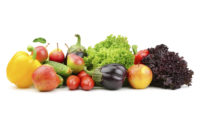A new study by Trucost, New York, finds the environmental cost of using plastics in consumer goods and packaging is nearly four times less than it would be if plastics were replaced with alternative materials.
The study, “Plastics and Sustainability: A Valuation of Environmental Benefits, Costs, and Opportunities for Continuous Improvement,” is based on natural capital accounting methods, which measure and value environmental impacts such as consumption of natural water and emissions to air, land and water, which are not typically factored into traditional financial accounting.
This study also builds on earlier research by comparing the environmental costs of using plastics to alternative materials and identifying opportunities to help lower the environmental costs of using plastics in consumer goods and packaging.
These significant results disrupt a common misconception around plastics. Trucost found that replacing plastics in consumer products and packaging with a mix of alternative materials that provide the same function would increase environmental costs from $139 billion to $533 billion annually. That’s because strong, lightweight plastics help manufacturers do more with less material, which provides environmental benefits throughout the lifecycle of plastic products and packaging.
The study also concluded that the environmental costs of alternative materials can be lower per ton of production, but are greater in aggregate due to the larger quantities of material needed to fulfill the same purposes as plastics.
In addition, the report’s authors recommend steps to help further reduce plastics’ overall environmental costs, such as increasing the use of lower-carbon electricity in plastics production, adopting lower-emission transport modes, developing even more efficient plastic packaging and increasing recycling and energy conversion of post-use plastics to help curb ocean litter and conserve resources.
Other key takeaways include:
- Flexible packaging can be significantly lighter than rigid packaging, boasts superior barrier properties, enables larger package sizes and can be more easily decorated and branded. Flexible packaging also creates value for customers while reducing the quantity of plastic needed per unit of packaging.
- The industry could see $7.3 billion in environmental cost savings through more efficient packaging designs in the food sector that deliver the same packaging functions but require 30% less plastic.
- Improved skin-type plastic packaging for sirloin steak can cut food waste by almost half compared to conventional plastic packaging (34% waste to 18% waste) with environmental savings of $606 per metric ton of beef sirloin sold.
The study was produced for the American Chemistry Council, Washington, D.C.


